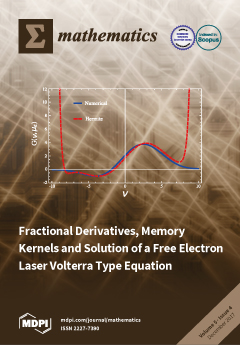In this study, we consider codes over Euclidean domains modulo their ideals. In the first half of the study, we deal with arbitrary Euclidean domains. We show that the product of generator matrices of codes over the rings mod
a and mod
b
[...] Read more.
In this study, we consider codes over Euclidean domains modulo their ideals. In the first half of the study, we deal with arbitrary Euclidean domains. We show that the product of generator matrices of codes over the rings mod
a and mod
b produces generator matrices of all codes over the ring mod
, i.e., this correspondence is onto. Moreover, we show that if
a and
b are coprime, then this correspondence is one-to-one, i.e., there exist unique codes over the rings mod
a and mod
b that produce any given code over the ring mod
through the product of their generator matrices. In the second half of the study, we focus on the typical Euclidean domains such as the rational integer ring, one-variable polynomial rings, rings of Gaussian and Eisenstein integers,
p-adic integer rings and rings of one-variable formal power series. We define the reduced generator matrices of codes over Euclidean domains modulo their ideals and show their uniqueness. Finally, we apply our theory of reduced generator matrices to the Hecke rings of matrices over these Euclidean domains.
Full article





